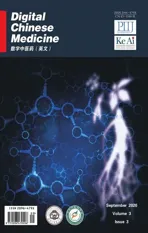A Network Pharmacology Study on the Effects of Ma Xing Shi Gan Decoction on Influenza
2020-11-03LONGXiLIULePingXUXinYiLILingZHANGGuoMin
LONG Xi,LIU Le-Ping,XU Xin-Yi,LI Ling,ZHANG Guo-Min*
a.Hunan University of Chinese Medicine,Changsha,Hunan 410208,China
b.Department of Blood Transfusion,the Third Xiangya Hospital of Central South University,Changsha,Hunan 410013,China
Keywords
Network pharmacology
Ma Xing Shi Gan Decoction(MXSGD)
Influenza
Cytoscape
iGEMDOCK
RELA-Licochalcone A
ABSTRACT
Objective Pharmacological methods were used to screen targets and signaling pathways of Ma Xing Shi Gan Decoction(MXSGD)during influenza treatments,and mechanisms underlying antiinfluenza effects were elucidated.
Methods The Traditional Chinese Medicine Systems Pharmacology Database and Analysis Platform(TCMSP)and relevant literature were searched under predefined conditions to identify the main compounds and their targets.Interactions between the target proteins were predicted using the STRING database.Gene Ontology(GO)functional enrichment analyses and Kyoto Encyclopedia of Genes and Genomes(KEGG)pathway analyses were performed on the core targets involved in the influenza protein-protein interaction(PPI)network,using WebGestalt and the reactome database.iGEMDOCK was used for molecular docking of receptors and ligands to produce docking scores,and the results were visualized using Autodock and PyMOL.
Results In total,126 major compounds and their respective targets were screened.355 influenza target proteins and 1 221 influenza protein interactions were predicted using the STRING database.Influenza-related signaling pathways were strongly enriched in pharmacodynamic targets of MXSGD such as cytokine signaling in immune system and signaling by interleukin.The main biological process was response to the stimulates.Molecular docking results showed that RELALicochalcone A docking elicited by MXSGD,was superior to that of other target proteins and active compounds,suggesting that the docking site is also the main effector site of MXSGD during influenza treatments.
Conclusions The results showed that MXSGD exerts antiinfluenza effects by interfering with virus adsorption,inhibiting virus proliferation,influencing immune functions and protecting host cells,which may prevent inflammation-induced tissue damage.
1 Introduction
Influenza is a globally occurring infectious disease.After infection,patients frequently suffer from fever,headache,myalgia and general discomfort and can develop pneumonia,which is likely to cause complications[1].In severe cases,influenza can cause multiple organ failure and death.The main subtypes of influenza virus detected in winter and spring 2018 and 2019 belonged to H1N1[2].Influenza vaccination for prevention and treatment is an effective method,but there are still some shortcomings.High pathogenicity,high lethality and low cure rate of influenza can cause substantial damage to affected individuals[3-5].
According to the theory of traditional Chinese medicine(TCM),the symptoms of influenza are caused by exogenous wind heat and poisonous evil which is trapped in the lungs.The basic pathogenesis comprises evil heat,silicosis and obstruction of the respiratory tract[6].Chinese medicine suggests “pattern identification”,thus treatment of influenza should include diffusing the lung.The textTreatise on Cold Damage Diseases(Shang Han Lun,《伤寒论》)notes “After sweating,you can’t make Gui Zhi Decoction.If you sweat and asthma without heating,you can use Ma Xing Shi Gan Decoction(MXSGD).” MXSGD is used to treat influenza,and it consists of four herbal medicines:Ephedra Herba(Ma Huang,麻黄),Armeniacae Semen Amarum(Ku Xing Ren,苦杏仁),Glycyrrhizae Radix Et Rhizoma(Gan Cao,甘草)and Gypsum Fibrosum(Shi Gao,石膏).It has similar effects as diffusing the lung and may help treat cough and asthma symptoms of pulmonary inflammation.A vast body of literature suggests that MXSGD can exert positive effects in influenza treatments[7-12].
TCM may offer considerable advantages regarding treatments of complex diseases,however,the current lack of research methods for investigating diseases and active compounds of TCM may prevent scientific assessment of its systematic application.Network pharmacology based on disease-target-drug interaction networks has been used previously to examine relationships between multi-compound and multi-target systems of TCM and to explore mechanisms of human disease and health[13].This research method incorporates a holistic and systematic approach,and it agrees with the basic theory of TCM,the overall concept of TCM,and with prescription treatment; moreover,this method can explain the mechanism of “regular medicine-medicine” affecting diseases[14,15].Beneficial effects of MXSGD in influenza treatments have not been sufficiently elucidated due to the complexity of working mechanisms of active compounds of prescription drugs and interactions of influenza virus targets.The objective of the present study was to explore the mechanisms of influenza treatments based on MXSGD through network pharmacology and molecular docking.
2 Materials and Methods
2.1 Collection and screening of MXSGD components and corresponding targets
We used the Traditional Chinese Medicine Systems Pharmacology Database and Analysis Platform(TCMSP,http://lsp.nwu.edu.cn/tcmsp.php)[16]with the search terms “Ephedra Herba(Ma Huang,麻黄)”“Armeniacae Semen Amarum(Ku Xing Ren,苦杏仁)” and “Glycyrrhizae Radix Et Rhizoma(Gan Cao,甘草)” to account for all compounds of MXSGD.The compounds of Gypsum Fibrosum(Shi Gao,石膏)was not found,thus we predominantly relied on literature research to identify the main chemical components of Gypsum Fibrosum(Shi Gao,石膏).Compounds with high activity according to TCMSP were produced by screening the compounds of Ephedra Herba(Ma Huang,麻黄),Armeniacae Semen Amarum(Ku Xing Ren,苦杏仁)and Glycyrrhizae Radix Et Rhizoma(Gan Cao,甘草)with oral bioavailability(OB)≥ 30% and drug-like(DL)≥0.18.The single main compound of Gypsum Fibrosum(Shi Gao,石膏)was not screened.Through the TCMSP platform,the selected compounds were collected in respective target databases to relate to their targets.The target of Gypsum Fibrosum(Shi Gao,石膏)was retrieved using the STITCH platform(http://stitch.embl.de).
2.2 Influenza disease target collection
Using the Comparative Toxicogenomics Database(CTD)[17](http://ctd.mdibl.org/)and the Online Mendelian Inheritance in Man(OMIM)database[18](https://www.omim.org/),targets of influenza viruses were compiled using the search term“influenza”.In total,7 790 targets were produced,and all targets identified in the OMIM database were selected,as the amount of data in the OMIM database was comparatively small.In contrast,the amount of data in the CTD database was vast,thus we selected either the top 500 targets or those with an inference score > 10.The inference score indicates a correlation between the active compound and its target,with higher values indicating stronger correlation[19].After eliminating duplicate values,601 targets of influenza viruses were retained.
2.3 Protein-protein interaction(PPI)networks
In order to visualize functions and interactions between target proteins,the compiled influenza targets were processed using the STRING 10.0 database[20](https://string-db.org/)to produce a PPI network of influenza target proteins.After importing the network into Cytoscape 3.4.0 software[21],it was matched with the component-target network to get the target protein which component act on influenza by.The target protein was entered into STRING 10.0 to produce a PPI network of the influenza target protein,and the network was processed using Cytoscape to examine and analyze its topology properties.
2.4 Gene Ontology(GO)functional enrichment analysis
The gene target was identified by processing the core target of the above analysis in the WebGestalt[22]database(http://www.webgestalt.org/)so as to elucidate genetic effects of the main components of MXSGD.
2.5 Kyoto Encyclopedia of Genes and Genomes(KEGG)pathway analysis
The KEGG pathway enrichment analysis was performed on the core target obtained by the above analysis using the reactome database[23](https://reactome.org)to understand the role of the target protein of the main component of MXSGD in the signaling pathway and to examine how MXSGD may exert beneficial effects in influenza treatments.Results of the enrichment analysis were visualized using Omicshare software(http://www.omicshare.com/tools/index.php/).
2.6 iGEMDOCK molecular docking
iGEMDOCK[24]is an analysis tool based on docking poses,that is,protein-ligand interactions and compound properties,and results can be visualized directly using molecular visualization tools.Docking results can be produced after uploading the protein structure files from the Protein Data Bank(http://www.rcsb.org/),and ligand files can be obtained from the ZINC(http://zinc.docking.org/)or Pub Chem(http://pubchem.ncbi.nlm.nih.gov/)online compound databases in pdb and mol2 format,respectively.The term “fitness” in the energy column refers to the total energy of the predicted pose at the binding site.The empirical scoring function of iGEMDOCK is estimated as follows:fitness=vdW + Hbond + Elec,where vdW is Van der Waal energy,and Hbond and Elect are hydrogen bond energy and electronic statistical energy,respectively.The degree of binding is judged by the level of energy,i.e.,lower energy indicates higher stability of the bond between compound and protein.The function Autodock was used to identify the docking site,and PyMOL was used to visualize docking results.
3 Results
3.1 Compilation and screening of MXSGD compounds and corresponding targets
A total of 657 components of MXSGD were collected using the TCMSP database,including 363 compounds of Ephedra Herba(Ma Huang,麻黄),113 compounds of Armeniacae Semen Amarum(Ku Xing Ren,苦杏仁),280 compounds of Glycyrrhizae Radix Et Rhizoma(Gan Cao,甘草),and one compound of Gypsum Fibrosum(Shi Gao,石膏).Using screening thresholds of OB ≥ 30% and DL ≥ 0.18,135 compounds were produced,and 126 types of main compounds of MXSGD were retained after eliminating duplicate values(Table 1).After compiling the corresponding targets of the main compounds of MXSGD using the TCMSP database and the STITCH platform,we can get 260 targets of MXSGD.
3.2 Construction of a PPI network
Component target proteins identified from the TCMSP database were imported into the STRING 10.0 database and were examined to produce an influenza PPI network.The network was processed using Cytoscape and was merged with the compound-target network to identify influenza protein targets of MXSGD.These targets were processed using STRING 10.0 to produce a PPI network of MXSGD affecting influenza target proteins which was then topologically analyzed using Cytoscape.The PPI network of influenza(Figure 1)contained 355 influenza target proteins and 1 221 influenza protein interactions.Results of the Network Analyzer of Cytoscape suggested that the genes Tp53,MAPK1 and RELA are key targets of influenza viruses.The PPI network of influenza target proteins of MXSGD(Figure 2)contained 52 target proteins and 672 protein interactions.Results of the Network Analyzer of Cytoscape revealed the topologies of MXSGD in the PPI network of influenza target proteins.Targets are shown in Table 2,ranked by degree.The targets included Tp53,AKT1,IL-6,JUN and MAPK8,among others.
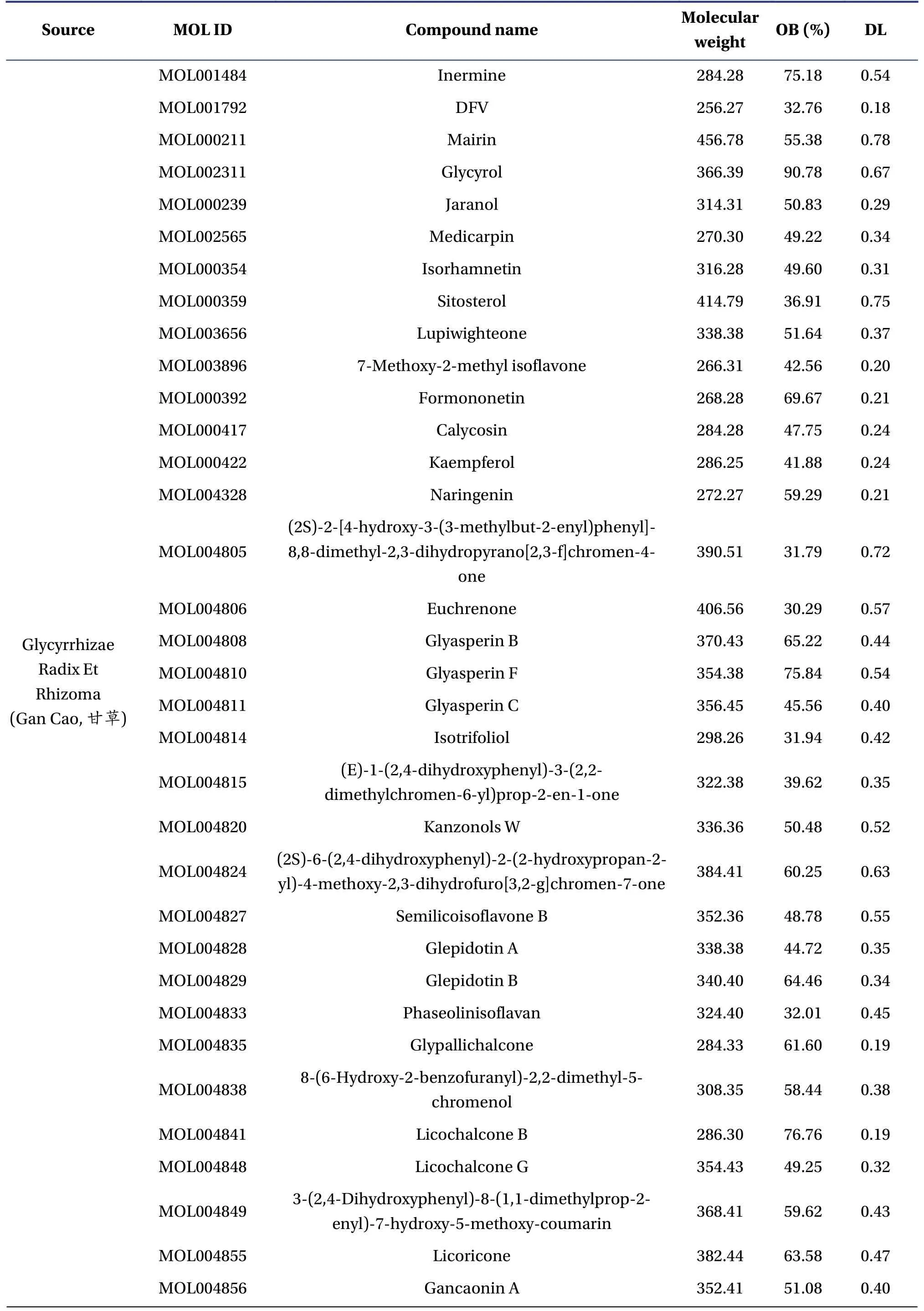
Table 1 Active compounds of MXSGD

Table 1 Continued
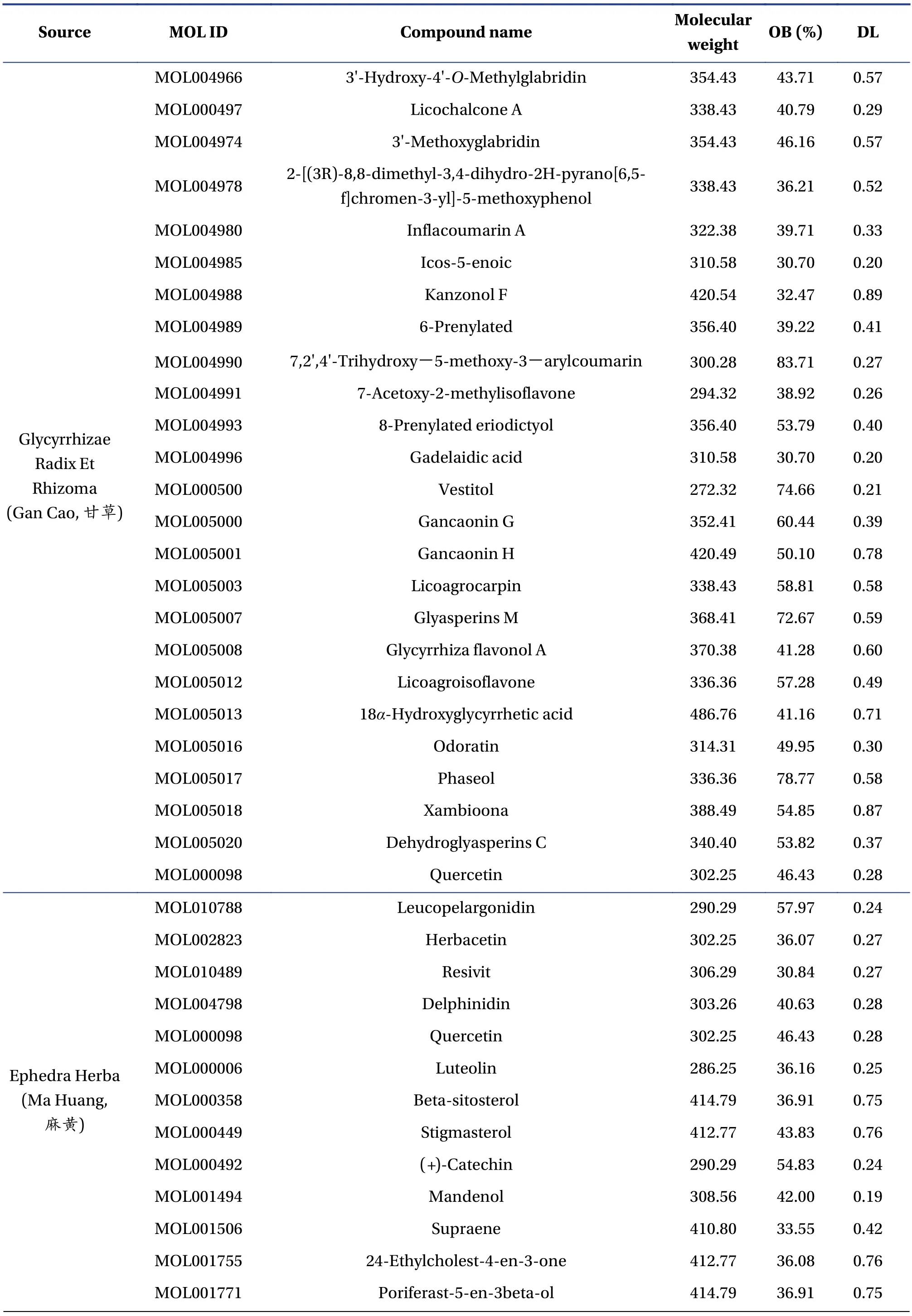
Table 1 Continued
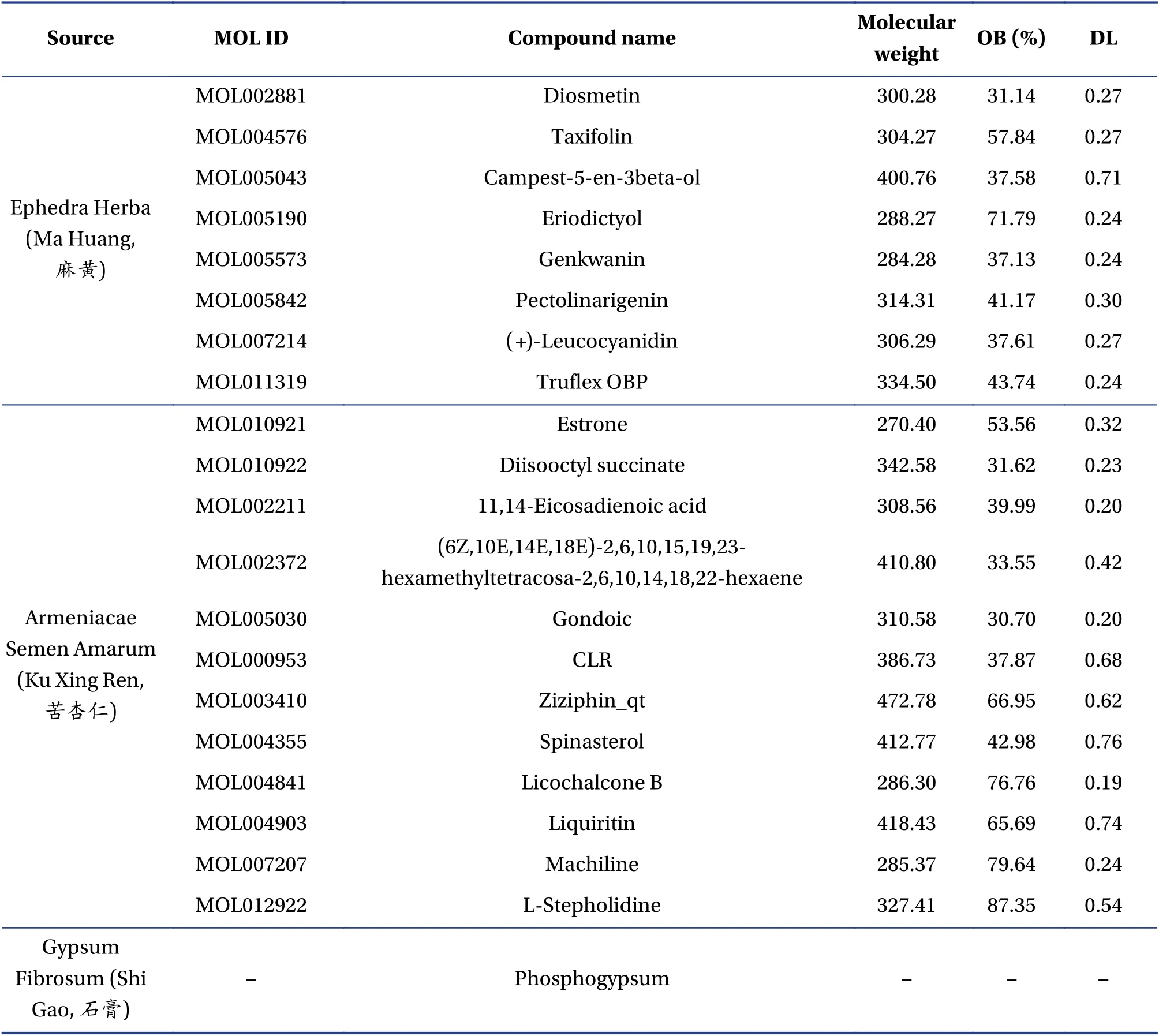
Table 1 Continued
3.3 GO functional analysis
GO functional enrichment analysis was performed on 52 core targets involved in the PPI network using the WebGestalt database.This produced 12 biological processes including responses to stimuli,biological regulations and metabolic processes,19 cellular components including nucleus,membraneenclosed lumen and cytosol,and 14 molecular functions including protein binding,ion binding and transferase activity(Figure 3).
3.4 KEGG pathway enrichment analysis
KEGG pathway enrichment analysis were performed on the core target protein of the PPI network of agglutinin in the influenza using the reactome database.Results were screened using aP<0.01 and with an FDR<0.05.The top 20 samples were visualized using the Omicshare platform(Figure 4).The color band on the right indicates the main enrichment pathway,withPvaluesincreasing from red to purple.We suggest that the effects of MXSGD on influenza involve multiple complex biological processes.MXSGD acts on targets at the core of the influenza PPI network.The predominantly involved pathways were cytokine signaling in the immune system(Figure 5)and interleukin signaling(Figure 6),among others(Table 3).
3.5 Results of iGEMDOCK molecular docking
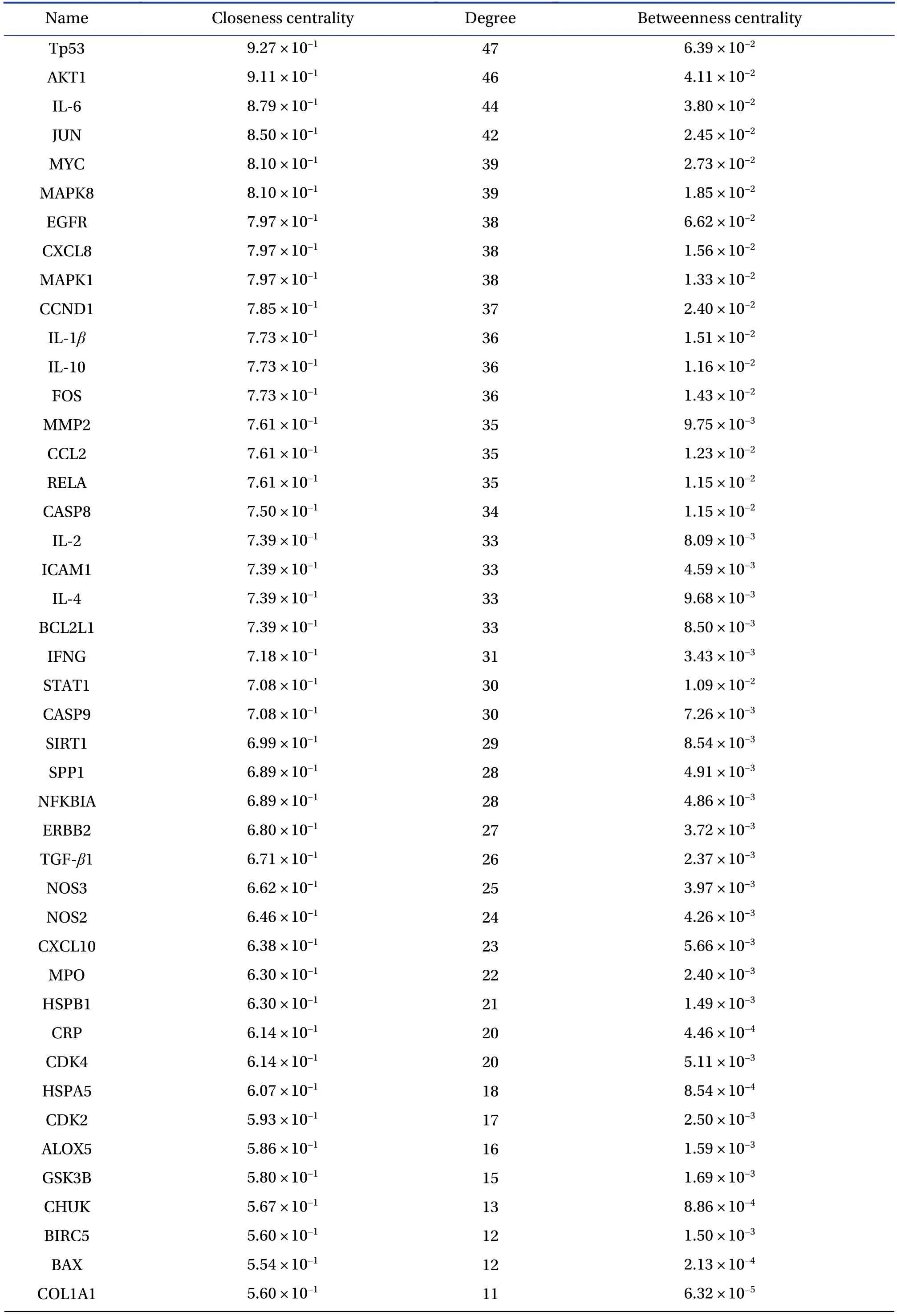
Table 2 Topological properties of MXSGD compounds acting on influenza target proteins
From the above results,we conclude that the top three core targets during influenza treatment are Tp53,MAPK1 and RELA.These three core targets are also MXSGD targets during influenza treatment,and the top three core targets of MXSGD during influenza treatment were Tp53,AKT1 and IL-6.The five targets Tp53,MAPK1,RELA,AKT1 and IL-6 were selected for docking and comparison with the corresponding active compounds and with oseltamivir and amantadine,which are commonly used in clinical research for treating influenza(Figure 7).The docking results show that,compared with oseltamivir and amantadine,MXSGD compounds produced lower binding energy and were more stably bound to their respective receptors.The lowest binding energy was observed in RELA-Licochalcone A,followed by RELA-Quercetin and RELA-Naringenin.The specific docking site is shown in Figure 8.The binding site of RELA and Licochalcone A is amino acid 441 of the RELA protein,the binding site of RELA and Quercetin is constituted by amino acids 64 and 80 of the RELA protein,and the binding site of RELA and Naringenin is constituted by amino acids 322 and 325 of the RELA protein.

Table 2 Continued
4 Discussion
Network pharmacology integrates the three aspects target,drug and disease,using them as intermediate nodes,and the links between the three aspects are regarded as edges,thereby producing specific information through complex network analysis methods[25-29].This approach may be used to visualize the multi-compound,multi-target and multi-path effects of TCM through network construction.MXSGD was first mentioned inTreatise on Cold Damage Diseases(Shang Han Lun,《伤寒论》),and it is predominantly used to treat symptoms such as cough,asthma and even nasal ale flaps or high fever[30].Recent research showed that MXSGD can be used to treat a variety of lung diseases[31-36].The current study is based on network pharmacology and analyzes network characteristics through the connection and relationship of nodes in biological networks in order to explore the mechanism of MXSGD in influenza treatments.
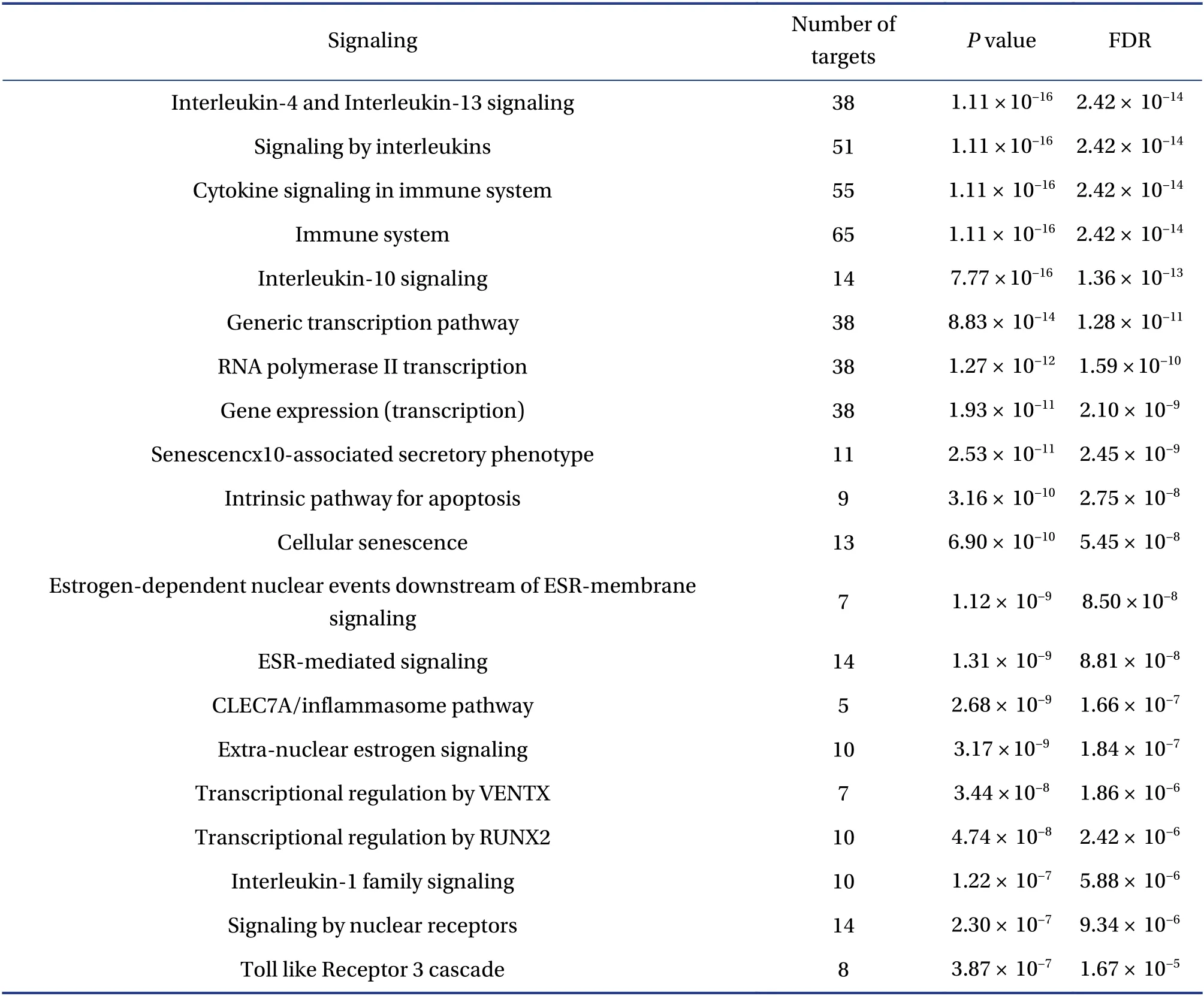
Table 3 KEGG pathway enrichment during MXSGD-based influenza treatment
According to the above results,treatment of influenza using MXSGD involves 52 main targets,12 biological processes,19 cellular components,14 molecular functions and 20 major KEGG pathways.We analyzed topological properties of 52 important targets and assessed closeness centrality and average length of the shortest path from each node to other nodes in the topology of network nodes.The degree indicates the number of neighboring nodes of any one node[37].The advantage of this indicator value is that it is intuitive and simple to calculate,however,it does not necessarily reflect the significance of any one node in the network accurately.“Betweenness centrality” is based on complex calculations to characterize the role of the node within the network,to indicate the number of shortest paths between all pairs of connected nodes,and to estimate the load of a node within the network[38].After comprehensive analysis of topological properties,Tp53,AKT1,IL-6,JUN,MAPK8 and MAPK1,among others,were identified as important targets.Studies have shown that microRNA(miRNA)commonly occurs in viruses and eukaryotes and participates in the regulation of almost all cell physiological processes that have been studied in the past[39-44].Abnormal miRNA expression has been observed during infection with influenza,and miRNAs are strongly correlated with regulation of AKT1,JUN and other genes.MXSGD was suggested to interact with genes such as AKTI and JUN to regulate miRNA and thereby inhibit influenza viruses.As shown in Figure 6,interleukin signaling pathways including those of IL-2,IL-4,IL-6 and IL-10 can affect interleukin signaling through the STAT gene[45,46],and previous studies showed that STAT1 can control early-stage replication of influenza viruses[47].The interleukin family plays an important role in cytokine signaling pathways of the immune system,suggesting that interleukins are involved in regulating the immune system,and MXSGD can interfere with excessive immune responses by intervening interleukins.The Tp53 gene was found to exert antiviral effects by inhibiting virus replication and increasing innate and adaptive immune competence through IFN[48].Thus,MXSGD may help counteract influenza infections by regulating Tp53 expression so as to inhibit virus replication and improve the respective immune functions.Taken together,we conclude that MXSGD may exert anti-influenza virus effects,predominantly by regulating RNA expression to inhibit virus replication and overexpression of inflammation factors,and regulate the immune system.
In the KEGG enrichment pathway,MXSGD appeared to affect RNA polymerase by reducing its positive regulatory effect and thus inhibiting virus replication.Influenza viruses may also be inhibited by regulating genes such as AKTI and JUN,among others,to mediate general transcription pathways,RNA polymerase II transcription pathways,gene expression(transcription)pathways,and regulation of ribozyme and nucleotides in biological processes.In addition,the GO functional and KEGG pathway analyses indicated that MXSGD affected the genes IL-2,IL-4,IL-6 and Tp53,among others.These factors can promote immune cell proliferation which can cause excessive inflammatory reactions.MXSGD can thus reduce excessive inflammatory processes by inhibiting gene expression.In a study on lipid and protein metabolism,MXSGD was found to be associated with inhibition of neuraminidase during influenza treatment[49],which subsequently induced production of specific humoral and cellular immune factors.Taken together,MXSGD exerts anti-influenza effects by interfering with virus absorption,inhibiting virus proliferation,regulating the immune system and protecting host cells.
Molecular docking results in this study indicated that the bond of the target protein rela and the drug was most stable.Combined with Licochalcone A,Quercetin and Naringenin from Ephedra Herba(Ma Huang,麻黄)and Glycyrrhizae Radix Et Rhizoma(Gan Cao,甘草),the binding energy is reduced which should increase its efficiency.Although most compounds of MXSGD stemmed from Glycyrrhizae Radix Et Rhizoma(Gan Cao,甘草),the main compounds with more stable binding to the target originated from Ephedra Herba(Ma Huang,麻黄),which is a sovereign medicine.Previous studies have shown that both licochalcone a and naringenin can inhibit activation of NF-κB and exert anti-inflammatory effects[50,51].NF-κB is a key protein in immune and inflammatory responses,and RELA is a subunit of NFκB[52].Quercetin was found to possess antiviral,antiinflammatory,anti-oxidant and vasodilatory effects[53]; therefore,Licochalcone A,Quercetin and Naringenin of Ephedra Herba(Ma Huang,麻黄)and Glycyrrhizae Radix Et Rhizoma(Gan Cao,甘草)may have certain anti-inflammatory effects by inhibiting the expression of RELA and by preventing excessive inflammation and inflammation-induced tissue damage.
In the current study,we identified compounds of MXSGD that are potentially active against influenza using systematic pharmacology,and we used a molecular docking method to comprehensively elucidate therapeutic mechanisms of MXSGD in influenza treatments.Our results are mostly consistent with those of previous studies.Although our results are very interesting,further research and experimental data would be needed to clarify mechanisms such as drug dosage effects,whether miRNAs are mediated by the AKT1 gene to inhibit influenza viruses,and whether two-way regulations of interleukins may occur.In addition,the molecular mechanisms of active compounds should be testedin vivoto evaluate potential clinical application.
Acknowledgements
We thank for the funding support from the National Natural Science Foundation of China(No.81973670),the Natural Science Foundation of Hunan Province(No.2018JJ2297),the Key Program of Scientific Research Fund of Hunan Provincial Education Department(No.19A370)and the Project of Research Learning and Innovative Experiment for College Students in Hunan(No.2016284,No.2016281,No.2017281and No.2018420).
Competing Interests
The authors declare no conflict of interest.
猜你喜欢
杂志排行
Digital Chinese Medicine的其它文章
- Mathematical Analysis of the Meridian System in Traditional Chinese Medicine
- A Network Pharmacology Analysis of Cang Fu Dao Tan Formula for the Treatment of Obese Polycystic Ovary Syndrome
- Qualitative and Quantitative Analysis of Linoleic Acid in Polygonati Rhizoma
- Antioxidant,Antimicrobial and Wound Healing Potential of Helicteres isora Linn.Leaf Extracts
- Fermentation Production of Ganoderma lucidum by Bacillus subtilis Ameliorated Ceftriaxone-induced Intestinal Dysbiosis and Improved Intestinal Mucosal Barrier Function in Mice
- A Metabolomics Study of the Volatile Oil from Prunella vulgaris L.on Pelvic Inflammatory Disease
